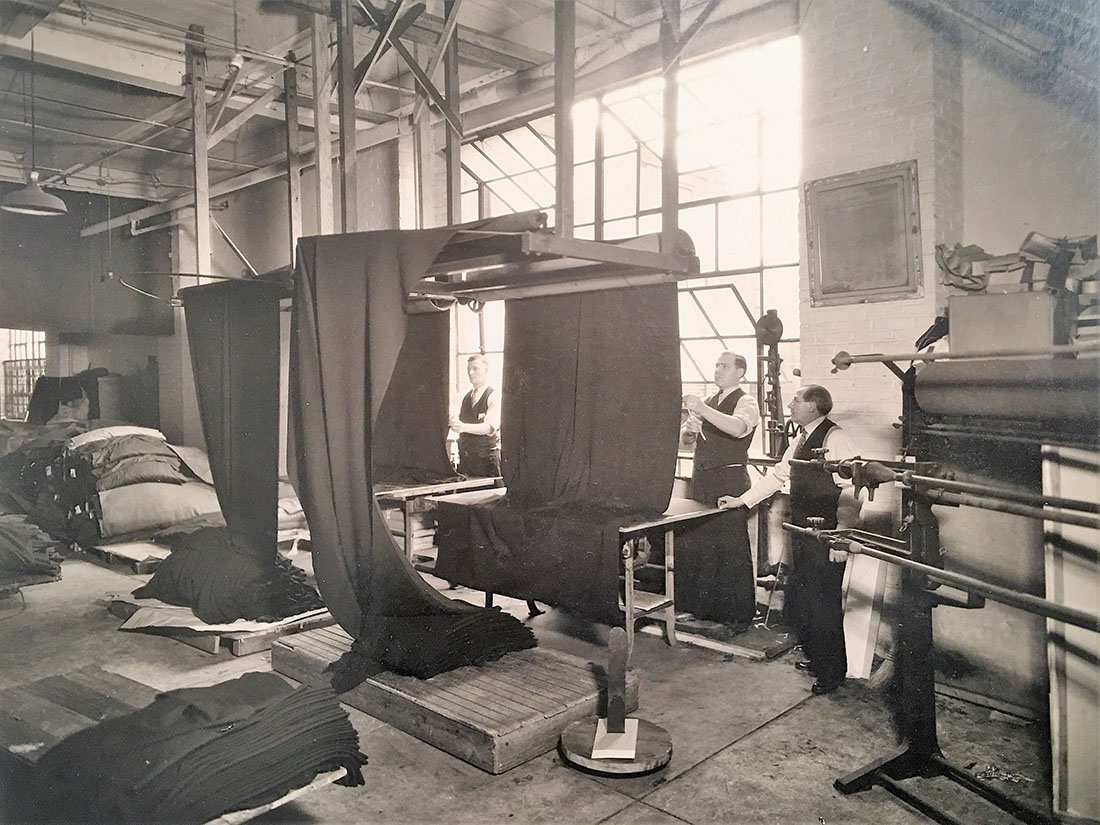Founded in 1901 in Baltimore as Levy’s Water Shrinking and Drying, TSG Finishing is now in its fifth generation of family leadership. With more than a century of experience in creating customized finishing solutions for a range of textile products, the company is an expert in refining and applying high-performance technologies to meet customer needs.
From its inception, TSG has been operated as a privately held, family owned corporation offering a broad range of proprietary and branded finishing options. With an in-house staff of chemists and process engineers, TSG specializes in developing unique formulations and technology. The company’s internal compounding operation and machine shop provides the flexibility to control quality, as well as customize treatments and processing scenarios. And proprietary engraving technology enables TSG to bring forth unique designs for applications ranging from automotive, sports apparel and industrial nonwovens.
In this edition of IFJ‘s “Executive Q&A,” Michael Goldman, president of TSG Finishing, explains how a small family business has been able to persevere through challenging times and achieve great successes.
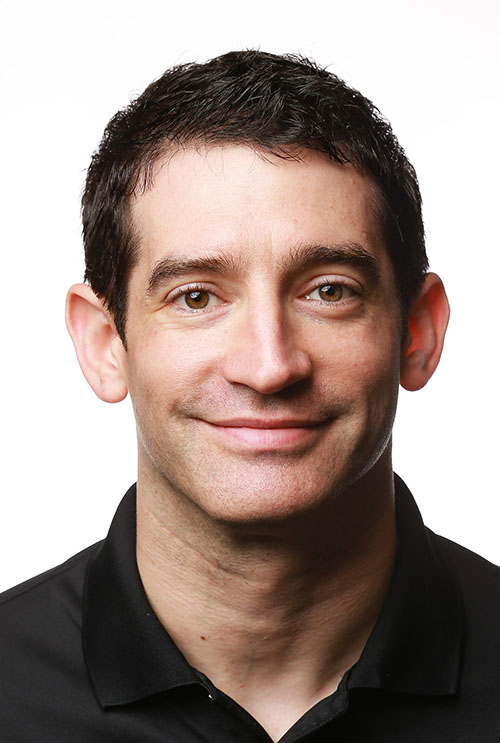
Matt Migliore: As I understand it, you are now part of the fifth generation of ownership. How did you and the other senior leaders on the TSG team get into the business?
Michael Goldman: TSG Finishing was founded in 1901 as Levy’s Water Shrinking and Drying. The ownership team is comprised of myself and my cousin, Brian Rosenstein. We are indeed the fifth generation to guide TSG and both the great-great-grandchildren of our founder, Jacob Levy.
Both Brian and I got our start working summers on the plant floor in TSG’s old plant in North Wales, Pennsylvania. We got to operate various pieces of finishing machinery and learned, first hand, about the experience of being an employee at TSG. It was this experience that led us to the core belief that our employees are our most important asset and that TSG’s triumph’s must be shared from top to bottom.
Though I can’t speak for Brian, there was nothing about the textile industry, in particular, that drew me to it. Instead, I fell into this position when trying to determine my career path after college. Brian was already in the business at that point and he, along with many other mentors, trained me on how to run a business and be a true leader.
Matt Migliore: What are the core technologies and applications TSG Finishing provides today?
Michael Goldman: TSG’s core competency resides in the ability to add value to textile products. We do this with a well-honed knowledge of chemistry, coating and drying methodologies, which can be adapted to suit many purposes. Typical projects for us involve adding durable water and stain repellents to fabrics, coating acrylic and similar resins and handling webs from 40 to 156 inches in width.
More generally put, we are the best option for many companies to take a textile product from concept to commercialization. We have designed custom coaters, formulations and handling methods to achieve our customers’ goals.
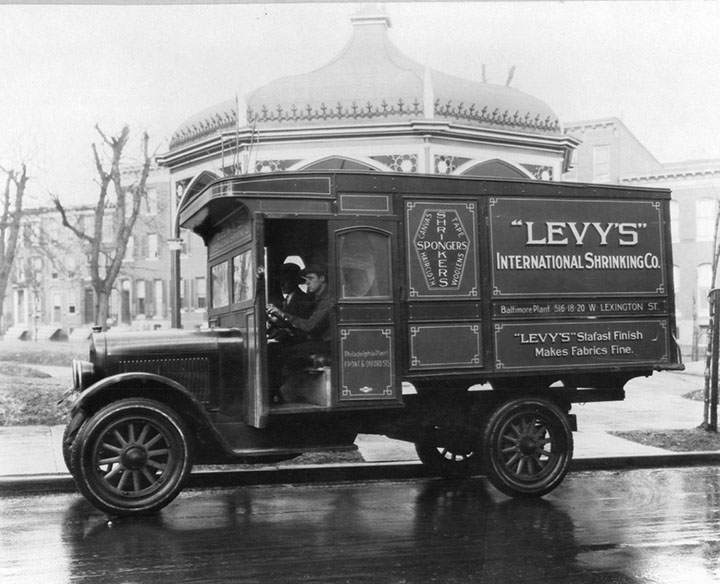
Matt Migliore: Finishing and treatment technologies have struggled with the challenges of chemical, energy and water use. How do you see this challenge and what are the opportunities it presents now and as we look toward the future?
Michael Goldman: At TSG we have always prided ourselves in complying with environmental regulations, while our competitors spend time and money fighting regulation. However, compliance is no longer enough to guarantee success. More and more, we find that proactively taking an additional step in compliance and environmental stewardship are what win us projects.
For example, we are actively marketing formulations in our flame retardant (FR) and repellent businesses that avoid halogenated compounds and PFAS (per- and polyfluoroalkyl substances), respectively. Though the chemistries in question are still allowed with some limitations, our initial solution to any problem must avoid these and many other compounds that are being regulated or banned across the globe.
Within the last 5 years, we have created a full-time compliance position; this person serves as our liaison between us, our suppliers, our customers and the many governmental and regulatory institutions. Again, we have never sought to fight the current of regulation, but rather to submit to its strength and allow it to guide our decision-making.
Matt Migliore: What areas of the textile finishing business do you see as particularly promising? What are the areas of opportunity in the market?
Michael Goldman: Since the 1960s, the backbone of our business has been upholstery finishing. However, we have successfully been able to leverage some of the same technologies we use for upholstery coating into the world of industrial coating. Industrial is a catch-all term for us that encompasses the work we do in various, non-decorative industry segments like medical, filtration and, most recently, construction materials. We believe we’re primed for growth in creating new, cutting-edge materials for all parts of the ‘building envelope.’
We already coat some of the world’s most advanced roofing and flooring underlayment, but we see significant opportunity in designing all the other materials that go into any construction project.
Matt Migliore: How has the COVID-19 pandemic affected your business?
Michael Goldman: It should be noted that COVID-19 is not TSG’s first pandemic. Our company was already in existence for 17 years when the flu pandemic of 1918 hit. The similarities between both situations are striking.
As a key supply partner for many medical and filtration products, we were quickly recognized by the state of North Carolina, where our manufacturing plants are located, as an essential business. From there, we had to relearn how to complete so many simple tasks, but now in a safe, distanced manner that would not jeopardize anyone’s health. We knew productivity would suffer but made sure to solicit input from all parts of our organization on how to handle each crisis as it arose. This ensured buy-in from the entire team.
From a business perspective, COVID-19 has had a dramatic impact on our ability to acquire needed materials and produce product efficiently. Our upholstery business ground to a halt in the early pandemic, but we were buoyed by a spike in coatings for needed PPE and filtration fabrics. From there the rollercoaster continued as one business segment would jump while another would crash. Overall, the pandemic has taught us not to rely on anything, but rather to accept challenges as they come and respond calmly and rationally.
This was a game-changer, not only for TSG, but also for the use of low-count, low-cost synthetic fabrics used in upholstered furniture. It opened up a whole new market in America for cheap mass-produced upholstered furniture not only for residential use, but also for contract and transportation purposes. The rest, as they say, is history.
Matt Migliore: If you were to name one or two great accomplishments, throughout the generations of your company, what would they be?
Michael Goldman: The one great accomplishment – truly a watershed moment for TSG – was developed squarely during our third generation of family ownership and probably did more than any other advancement to help transform Levy’s Shrinking & Drying Company from a small, regional finisher of narrow-width apparel fabrics, into a highly technical wide-width fabric finisher of seating fabrics for transportation and home office furnishings.
I’m referring to the TSG invention of “on-the-frame-coating,” or as it was known at the time, “coating between the pins.” This was a coating and drying process that allowed very low-cost but high-style synthetic fabrics to be used as furniture upholstery. This development placed TSG squarely at the forefront of coating technology for decorative upholstery fabrics, a position it held from the 1960s all the way through to the late 1990s.
The idea sounds simple now, but at the time it was truly a revolutionary development envied by many competitor companies, and it came about simply because of the development of new polymer-based synthetic fibers and the changing styles and tastes of American consumers.
For much of the first half of the 20th century, most upholstered furniture in the home and transportation fabric used in cars, buses and trains was made of a fabric known as plush-velour.
There were no synthetic fibers in use at that time, only natural fibers like cotton, flax or wool. Of those three fibers, wool was by far the most prevalent and the pile or carpet loom (first developed in Germany) was a widely used method for forming decorative textiles – either area rugs for the floor or tapestries which hung on the wall or upholstered on to seating surfaces.
A pile loom was every bit a weaving loom, but it assembled yarns in loops and the tops of the loops were shaved off in brush-like tufts. This was in comparison to the flat warp and filling yarns that come from the dobby looms we know of today. With a pile loom (or carpet loom), you end up with a thick, dense brush-like surface that is highly resistant to wear but also, quite abrasive to the touch.
In the transformative days of America as the 1950s turned into the 1960s, a whole new generation of young fabric designers began to experiment with bright iridescent rainbow colors and bold patterned designs like plaids, stripes and geometrics that could only be achieved through the use of new synthetic fibers like Nylon, Polyester and the newest synthetic entry at the time – Olefin (specifically polypropylene). Olefin/polypropylene eventually became the residential upholstery fiber of choice for the masses because of its low specific gravity – polypropylene has the lowest weight and therefore highest yield in yards per pound of any synthetic fiber, therefore it was the cheapest of the new synthetic fibers to be used for weaving a fabric.
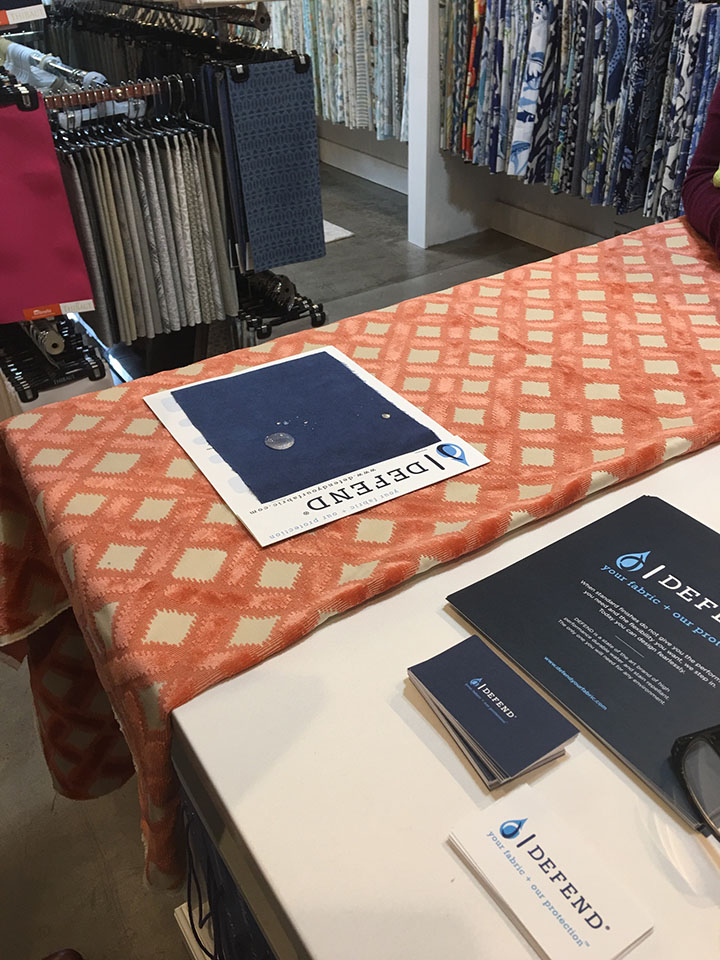
The new bold linear designs and bright colors which began showing up in the early 1960s, created a real problem for the furniture and seating manufacturers who were still trying to perform the same manual upholstering process they used for years. Pulling a heavyweight but solid-colored pile fabric over a wood furniture frame and then wrapping it around a down-stuffed cushion was one thing, now they were trying to stretch thin, low-count fabrics woven with slippery synthetic yarns over a new type of foam cushioning that had compressibility and rebound, not the typical cotton stuffing or goose down in your grandparent’s cushions that when compressed, stayed compressed!
The biggest problem was keeping those new bold stripes, plaids and geometrics, parallel and straight – straight enough so when looking across a long sofa or automotive bench seat, the slightest deviation away from parallel, didn’t make those bold, repetitive patterns on the seating surface look crooked and defective.
Latex had to be coated on to the back of these thin fabrics and then dried in an oven to literally hold the weave together so the yarns wouldn’t slip. Cheap, Polypropylene fabrics eventually got so thin and low-count, their plastic yarns had to be texturized with loops and “squiggles to make them look more natural, fluffy and take up excess air-space so the fabric would look thicker than it really was.
Eventually, the weave counts got so low that latex backing had to be colored to match the fiber so consumers would think they were looking at yarn instead of latex!
Enter TSG with a revolutionary new latex coating device for flat-woven fabrics that were constructed on a dobby loom with the new slippery synthetic warp and filling yarns. These new fabrics were so very thin, and the yarns slipped out of place so easily during the upholstering process – something had to be done!
A mechanical device called a tenter-frame was already in common use to keep the pattern lines square and parallel during the coating and drying process. After the fabric was coated with latex, it was typically carried through the drying oven under the tension of the tenter frame. The tenter frame held the woven fabric by its selvedges and pulled its filling yarns tightly until the weave pattern became straight while the fabric made its way through the drying oven.
The only problem was that the latex coaters of the day were always located just in front of the tenter frame. By the time the fabric made it on to the tenter-frame, the coating knife or coating roller had already slipped the yarns of the weave so much, that the pattern was too hopelessly crooked for the tenter frame to straighten back out.
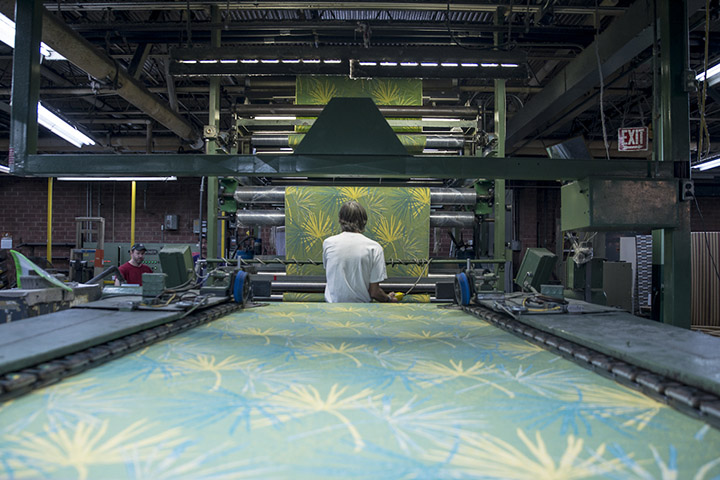
TSG designed a new type of coater in the early 1960s that fit elegantly between the rails of the tenter frame – not in front of the tenter frame as all other coaters. The TSG coater was carefully designed with precisely fitted side dams and a trough to hold the latex just inside the fabric selvedges without leaking out. This coater allowed the latex to be applied while the woven fabric was in its straightest condition – under the tension of the tenter-frame while the filling yarns were being pulled straight and parallel. This made the pattern look straight and parallel as well, and the dried latex on the back of the fabric solidified everything permanently into position so the fabric could be easily upholstered on to the furniture and cushions without looking crooked.
This was a game-changer, not only for TSG, but also for the use of low-count, low-cost synthetic fabrics used in upholstered furniture. It opened up a whole new market in America for cheap mass-produced upholstered furniture not only for residential use, but also for contract and transportation purposes.
The rest, as they say, is history.
Matt Migliore: If there were one thing you would want our readers, who are professionals/aspiring professionals allied to textile fiber-related applications and industries, to know about your journey into this venture, what would that be?
Michael Goldman: My one piece of advice is that learning doesn’t stop in school. We have consistently proved the “common wisdom” wrong – either by using chemistries in ways we were told they couldn’t be used, or by trusting our intuition by investing in a project that might not appear promising on the surface. We have 120-plus years of knowledge to draw-on, and there are valuable lessons there that won’t appear in textbooks.


